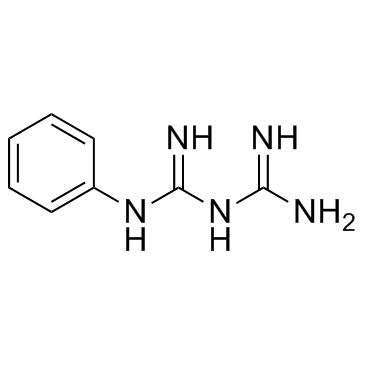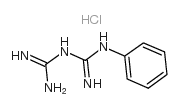Excitability of small-diameter trigeminal ganglion neurons by 5-HT is mediated by enhancement of the tetrodotoxin-resistant sodium current due to the activation of 5-HT(4) receptors and/or by the inhibition of the transient potassium current.
Y Tsutsui, M Ikeda, M Takeda, S Matsumoto
Index: Neuroscience 157(3) , 683-96, (2008)
Full Text: HTML
Abstract
The aims of the present study were to investigate whether the activation of the 5-HT receptor subtypes (5-HT(4) and 5-HT(3)) acted significantly on the modification of the tetrodotoxin-resistant sodium current (I(NaR)) in small-sized rat trigeminal ganglion (TG) neurons and whether the inhibition of the transient K(+) current (I(A)) contributed to the excitability in those neurons. 5-HT applications in at concentrations ranging from 0.01-10 microM significantly increased the peak I(NaR). One micromolar 5-HT application caused the greatest increase in the peak I(NaR) amplitude accompanied by a hyperpolarizing shift in the activation curve. A similar modification of I(NaR) properties was also obtained via the application of the 5-HT(4) receptor agonist, RS 67333, in concentrations ranging from 0.001-1 microM. The largest effects of 5-HT (1 microM) and RS 67333 (0.1 microM) on the modification of I(NaR) were abolished by pretreatment with ICS 205-930 (a 5-HT(3/4) receptor antagonist, 10 microM), which showed no significant effect on the baseline I(NaR). However, ICS 205-930 application at 30 microM caused a significant decrease in the baseline I(NaR). Phenylbiguanide (a 5-HT(3) receptor agonist) did not significantly alter I(NaR) properties when applied in concentrations ranging from 1 to 100 microM. The application of 0.1 microM RS 67333 decreased the transient K(+) current (I(A)) by approximately 31%. The threshold for action potential generation was significantly lower after the application of 0.1 microM RS 67333. Furthermore, 0.1 microM RS 67333 application increased the number of action potentials and the resting membrane potential got more positive, but it decreased the duration of depolarization phase of action potential. In addition, neither the additional application of 1 microM 5-HT in the presence of 10 microM forskolin, a stimulator of adenylyl cyclase, nor the opposite applications of 5-HT and forskolin caused the enhancement of increased I(NaR), which indicates the presence of an 'occluding effect.' These results suggest that the 5-HT-induced modification of I(NaR) is mediated by the activation of 5-HT(4) receptors, involving a cAMP-dependent signaling pathway, and that the inhibition of I(A) following the application of a 5-HT(4) receptor agonist also contributes to the increased number of action potentials.
Related Compounds
| Structure | Name/CAS No. | Molecular Formula | Articles |
|---|---|---|---|
 |
Phenylbiguanide
CAS:102-02-3 |
C8H11N5 | |
 |
1-phenylbiguanide hydrochloride
CAS:55-57-2 |
C8H12ClN5 |
|
Cardiovascular afferents cause the release of 5-HT in the nu...
2015-04-01 [J. Physiol. 593(7) , 1715-29, (2015)] |
|
Microvascular dilation evoked by chemical stimulation of C-f...
2015-01-01 [J. Appl. Physiol. 118(1) , 55-60, (2015)] |
|
5-HT1D receptor inhibits renal sympathetic neurotransmission...
2015-09-01 [Vascul. Pharmacol. 72 , 172-80, (2015)] |
|
Indian red scorpion venom-induced augmentation of cardio-res...
2011-02-01 [Toxicon 57(2) , 193-8, (2011)] |
|
Effect of 3,5-dicarbomethoxyphenylbiguanide on free radical ...
2012-12-01 [Bull. Exp. Biol. Med. 154(2) , 192-5, (2012)] |